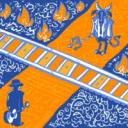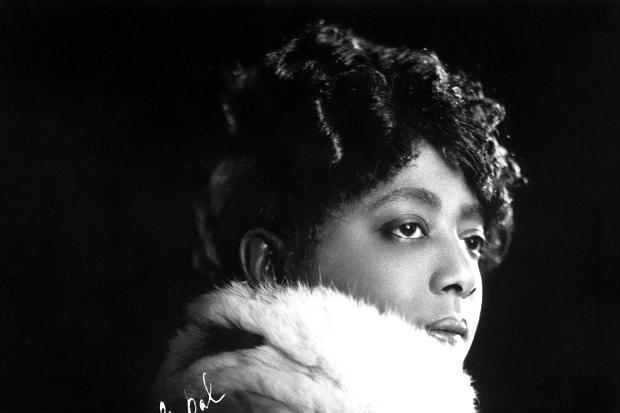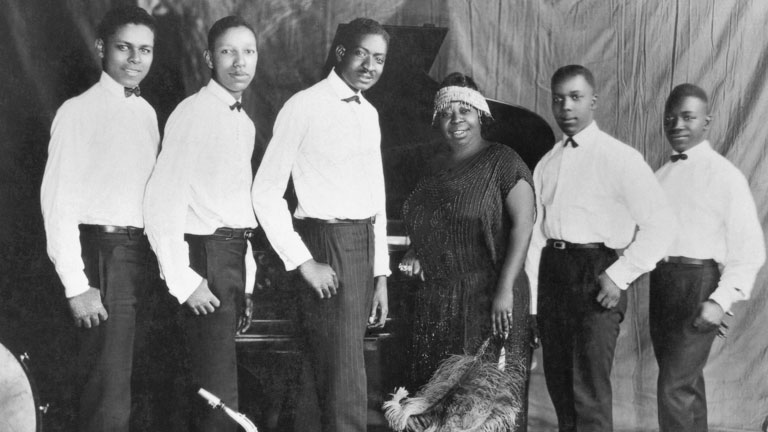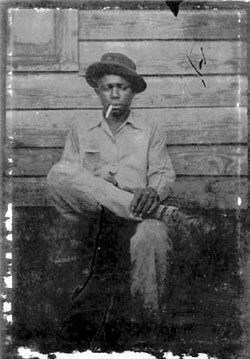Who Were the First Blues Musicians

First-Off, Separating Hokey-Pokey Blues from The Blues
Cracking open the dusty, Disney-castle-like volumes of blues history, who really were the first blues musicians? In asking that question, I think it begs some defintion and filtration. For instance, during the 1910s, there were a handful of vaudeville singers, such as Nora Bayes, Marion Harris, and Marie Cahill, who actually recorded songs from 1914 to 1917; the songs they recorded had the classic “something-something-blues” as their names. These included, Homesickness Blues, Paradise Blues, and Dallas Blues.

But, just like today, if Justin Bieber sung a song called Dallas Blues, is that all it takes to be called a blues singer? The vast majority would probably answer that with resounding (and relieving) no! Such can be said about these early vaudeville singers. Yes they’re remembered, somewhat, for making this small step, but it really doesn’t answer the question of who the first blues musicians were.
Early Anecdotes of Blues Musicians
This is also touched upon in another article here, Who Was the First Blues Singer, but it’s quite probable that the first blues musicians are both unknown and quite numerous. Actually, W.C. Handy and Ma Rainey — two people you’d think would be just about as far back along the blues timeline as you could stretch things — recalled two separate anecdotes, recalling first hearing the blues.

W.C. Handy’s Memory
For W.C. Handy, it was as far back as 1903. Waiting for a train in Tutwiler, Mississippi, a nearby man, dressed in rags, practically cast a spell on Handy. Struck by the sounds this man created, he took note of the song’s form, which was split into 3 stanzas, resulting in a 12 bar chorus. Also, the man played a worn guitar, with a knife-blade acting as a slide to accompany his singing.

Ma Rainey’s Memory
For Rainey, it was one year earlier than that, in 1902. At the time, she worked with a minstrel show, dragging along the tough travelling circuit of American cities. As she took rest in a tent one night, a women appeared in her tent, moaning in song about a man who’d left her. Transfixed by this woman, Rainey asked her what it was that she was singing? Simply, the woman replied, “the blues.” Later in 1923, Rainey would become one of the earliest recorded blues musicians.
Then There’s Henry Sloan
One last figure ought not to be left by the wayside. An obscure individual in the memories of early blues, who’s name rises time and again, is Henry Sloan. Recollected as a key figure in Dockery Farms’ brewing music melange, Sloan was apparently quite a key influence on Charley Patton; Patton went on to influence a whole slew of musicians, from Son House, to Tommy Johnson, to Howlin’ Wolf, to Robert Johnson, as well. Sloan, as blues fate would have it, never recorded. In fact, he’s said to have left Dockery Plantation, apparently for Chicago, in 1917 — though no one seems to know what happened to him from there.
Staying Focused on the Premise
Now, here’s the thing. Often times, the question of who the first blues musicians were is substituted with a different question, since that question is hard to answer. It’s one thing that pyschologist’s note: question substitution (politicians are masters of it). Anytime there’s a tough question, pivote the question’s premise and answer that new question. The first recorded blues musicians is easier to answer. If those vaudeville, “Bieber” type pop-singers of the time are ignored, then the claim goes to Sylvester “Curley” Weaver, Papa Charlie Jackson, Ma Rainey, Bessie Smith, Ed Andrews, and Charles Anderson. They all recorded in 1923. In the years that followed, Peg Leg Howell, Blind Lemon Jefferson, Blind Willie McTell, and Charley Patton all followed soon after, clocking their first dates between 1924 and 1929.

But that still doesn’t answer the question of who the first blues musicians were. Yes, those names were the first recorded blues musicians, but not necessarily the first blues musicians.
Given the anecdotes of W.C. Handy and Ma Rainey, as well as figures such as Henry Sloan, it’s probably fair to say that the first blues musicians were at least one generation older than the generation of first recorded blues musicians. In other words, it’s nearly impossible to say, other than to extrapolate that — assuming blues was a gradual transmutation of existing cultural forces within African-American folk musics — blues was in steady formation, probably forming in pockets here and there, throughout the latter half of the 1800s. In fact, both Lead Belly and Jelly Roll Morton, even Louis Armstrong I believe, recall hearing what was later coined as the blues during their early years in Louisiana too.
The Final Picture

Thus the first blues musicians certainly existed (of course they had to exist) but are unfortunately not remembered name by name. As a flip-side to this statement, strictly speaking, it’s therefore incorrect to say that the likes of Charley Patton, Curley Weaver, and Lead Belly, among others, were the first blues musicians; they were not. The way those first, faceless musicians are unidentifiable, yet still ought to be acknowledged, is like bacteria. Just because you can’t see it, doesn’t mean it’s not there.